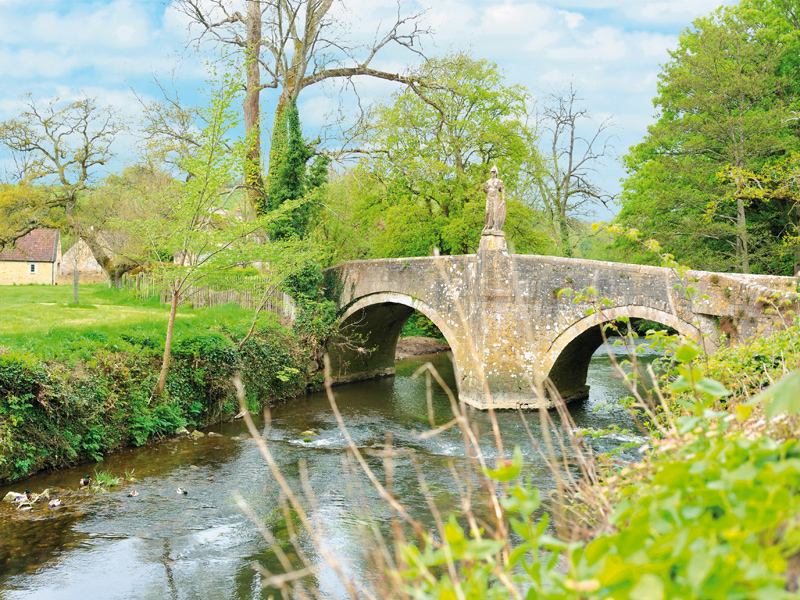
Amazing though it sounds, 4,000 homes in the UK are classed as 'not spots', meaning they have no internet access at all. A further 2.5 million are 'slow spots' that have connections of 2.5Mbps or less.
Most of these homes are away from the cities, in rural communities where large ISPs argue it just isn't economical to install the cabling and phone exchanges necessary to provide an internet connection.
Even if you live in a rural area with the basic infrastructure needed for broadband deals in most places, with problems like signal degradation as you move further from the exchange and reliance on poor quality copper wiring to carry the signal, it's unlikely that you'll be enjoying the high-speed internet so many people take for granted.
The government has recognised this problem, and confirmed in August that it is providing £530million towards funding the rollout of superfast broadband across the UK. A further £300million will be available in 2017 as part of the TV licence fee settlement. Culture secretary Jeremy Hunt said:
"I am absolutely determined that the UK will have the best superfast broadband network in Europe by 2015 - one that we all benefit from. Fast broadband is absolutely vital to our economic growth, to delivering public services effectively, and to conducting our everyday lives. Some areas of the UK are missing out, with many rural and hard-to-reach communities suffering from painfully slow internet connections or no coverage at all. We are not prepared to let some parts of our country get left behind in the digital age."
But three years is still a long time to wait for these rural communities to be able to enjoy the same internet experience as the rest of the UK, and even with this funding, the coverage will not be complete. If you read the fine print, although millions will benefit, there are still many who won't.
This funding is only to help 90 per cent of the people who don't have 'high speed' internet, leaving the remaining 10 per cent still off the grid. What's more, it's down to the communities themselves to alert their local MPs so they don't miss the chance to be considered for the funding.
Get daily insight, inspiration and deals in your inbox
Sign up for breaking news, reviews, opinion, top tech deals, and more.
For those who are still left out by these plans, there are solutions available to connect to the internet, but they aren't ideal. There's mobile broadband technology that uses the mobile phone 3G network to carry the signal, but with patchy coverage and high costs, it isn't always the best solution.
Similarly, satellite broadband, which can cost up to £600 per household just to set up, also has high monthly rates (£30-£100 depending on usage) and only provides low data speeds (typically 2Mbps).
DIY broadband
So what can you do if you aren't covered by these proposals, or if you just don't want to wait?
Rural communities who feel ignored by large corporate ISPs are nothing new, and many have already done something about it. In a few places dotted around the country, communities have banded together, decided they couldn't wait for other ISPs to come to them, and instead have installed equipment and set up their own ISP.
Others with partial services have successfully expanded the reach of the connections they already have, extending the Wi-Fi coverage available to them over a much larger area.
Whether you want to set up your own ISP as a private enterprise to ensure your needs are properly realised or you just want to widen the area covered by the broadband you do have, PC Plus is here to help.
Spread it around
If you already have a connection, how about spreading it a little further? Perhaps you already have access to high-speed broadband, but only in one place. Maybe you have it in one building, but would like to share it with others.
There's a variety of ways to extend the range of your broadband and share your connection without incurring the costs of adding extra infrastructure like more cabling.
Better antennas
One simple way to extend the range of your broadband connection is to replace your router's provided antenna with a more powerful one. This will increase the strength of your Wi-Fi signal, and therefore its range.
How much you can improve it depends on your current setup, so you should start by checking your wireless equipment's manual for the antenna gain. This measures the degree to which your antenna can focus received and output signals, and is expressed in dBi (decibels isotropic).
The higher this figure, the better your system should perform. As a rough guide, the standard adaptor has a gain of around 2dBi, and every 3dBi you add to that will double your range. You can also use high-gain antenna dishes to boost your signal in this way, although these are mostly used to provide a tight band of signal to a specific point, rather than increase the all-round range.
Note that there is a legal limit for how far you can increase the power of your signal. If the range of just one wireless antenna isn't enough to reach all the areas where you want internet access, it may be worth considering setting up a wireless distribution system (WDS). This is where you add another wireless access point that acts as a bridge or repeater to relay the signal to other computers in range.
In effect, you're creating two wireless networks that work as one. This has the advantage of preserving the MAC addresses of client packets across links between access points. The downsides are that, because every access point has to be on the same channel, it can cause interference, and throughput is halved for each person attached to the network.
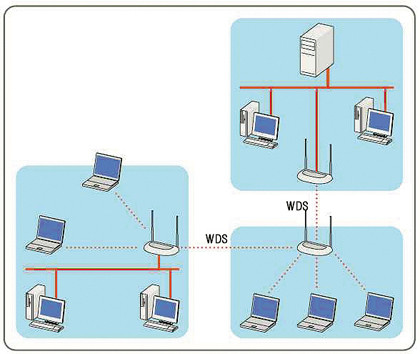
Be careful when considering this, because WDS isn't a tightly defined standard and different manufacturers' access points may not work together.
Wireless bridges
If the area with which you want to share your signal is too far way for either of these two systems to help, it may be worth investing in a wireless bridging kit. Provided you have a line of sight between the two buildings, you can transfer the broadband signal wirelessly across the gap.
Industrial versions of this technology can cost anything from £100 to £500, but will allow you to transmit your signal over a gap of three or four miles, and it can be set up in an afternoon.
If you don't have a couple of hundred pounds to spare, it may be easier to try a home-brew solution commonly known as a cantenna. Yes, that's a high-gain antenna made out of a can, and it's quite easy to make. This lets you focus the usually omni-directional output of your Wi-Fi antenna into a concentrated beam, which can then be received much further away. If you get it right, you can broadcast your signal to a building up to a mile away for the cost of some wire and two connectors.
Again, line of sight is very important, so you need to point it exactly at your PC or laptop's Wi-Fi receiver.
How to make a cantenna
1. Find the right can
To account for the right wavelength, it's important that you choose the best can for the job. Although a lot of people have made their cantennas from Pringles tins, some say that a larger tin like an SMA milk can provides a much better signal. Can diameters of 3-6-inches have provided good results, but everyone who's experimented with this DIY approach agrees that the longer the can, the better the result.
2. Get the right connector
You need an N-type female chassis mount connector, and the appropriate pigtail connector for your wireless card's external antenna connector. The chassis-mount connector will be placed through the side of the can so you can connect the pigtail cable to it, then connect that to your wireless card. You can buy the connectors and cables cheaply from www.solwise.co.uk.
3. Drill the hole in the can
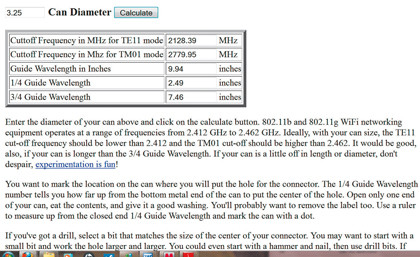
The diameter of the can will determine where you need to drill the hole for the connector. It needs to be positioned a quarter of a wavelength from the base of the can. Luckily, there are calculators that will work this out for you, like the one pictured above from www.turnpoint.net. For example, with a 3.25-inches diameter can, the hole needs to be 2.49-inches from the bottom of the can.
4. Attach the chassis-mount connector
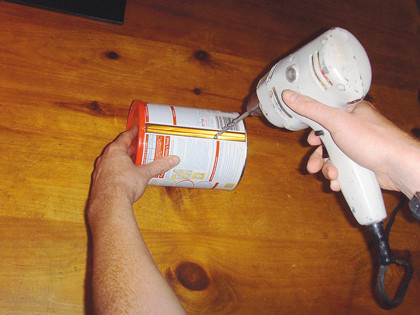
The hole for the chassis-mount connector has to be as tight a fit as possible, so we recomment drilling the hole slightly smaller than necessary and squeeze the mounting through. This will cause the minimum of interference inside the can. You will also need to solder 1.21-inches of wire to the top of the connector to act as an antenna inside the can.
5. Find a cap
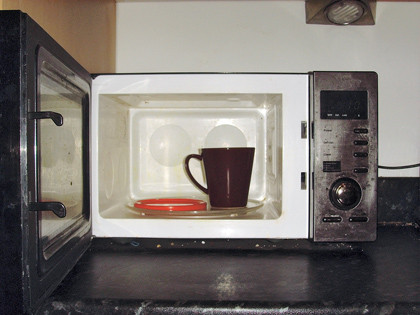
A cap isn't necessary, but if you're mounting your cantenna outside, it will protect it from the elements. SMA milk cans and Pringles tubes come with plastic caps, but you need to check they don't interfere with the microwave rays emitted by your cantenna. To find out, put the cap into a microwave with a cup of water, then blast them for 10 seconds. If the water is warm and the cap is cool, it will work fine.
6. Getting the best signal
Once the chassis mount is in place, it's just a case of attaching the antenna to a suitable tripod or wall, and then pointing it in the direction you want to broadcast your signal. Before fixing it in place, you need to rotate the can to find the best signal strength. It's good to get a friend with a laptop at the other end of the setup who can tell you when the signal is highest.